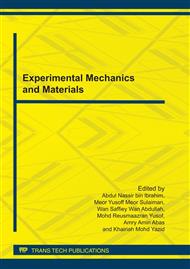p.224
p.230
p.237
p.244
p.249
p.255
p.261
p.267
p.274
High Frequency Acoustic Signal Analysis for Internal Surface Pipe Roughness Classification
Abstract:
This research highlights a method of acoustic emission analysis to distinguish the internal surface roughness of pipe. Internal roughness of pipe indicates the level of corrosion occurring, where normally it is difficult to be monitored online. Acoustic Emission (AE) technique can be used as an alternative solution for corrosion monitoring in pipes, especially for complex pipelines that are difficult to achieve by other monitoring devices. This study used a hydraulic bench to provide fluid flow at two different pressures in pipes with different internal surface roughness (rough and smooth). The main source of acoustic emission was from activity in the control valve, coupled with high pressure water flow friction on the surface of the pipe. The signal from these sources was detected by using the AED-2000V instrument and assisted by the Acoustic Emission Detector (AED) software. The time domain parameter; root mean square, RMS amplitude were processed and compared at different pressures for each type of internal pipe roughness at ten different locations. It was observed that a unitless Bangi number, AB, derived from RMS values, can be used for discriminating different level of internal surface roughness. Internal surface pipe can still be considered as smooth if AB value is above 1.0.
Info:
Periodical:
Pages:
249-254
Citation:
Online since:
July 2011
Authors:
Keywords:
Price:
Сopyright:
© 2011 Trans Tech Publications Ltd. All Rights Reserved
Share:
Citation:


